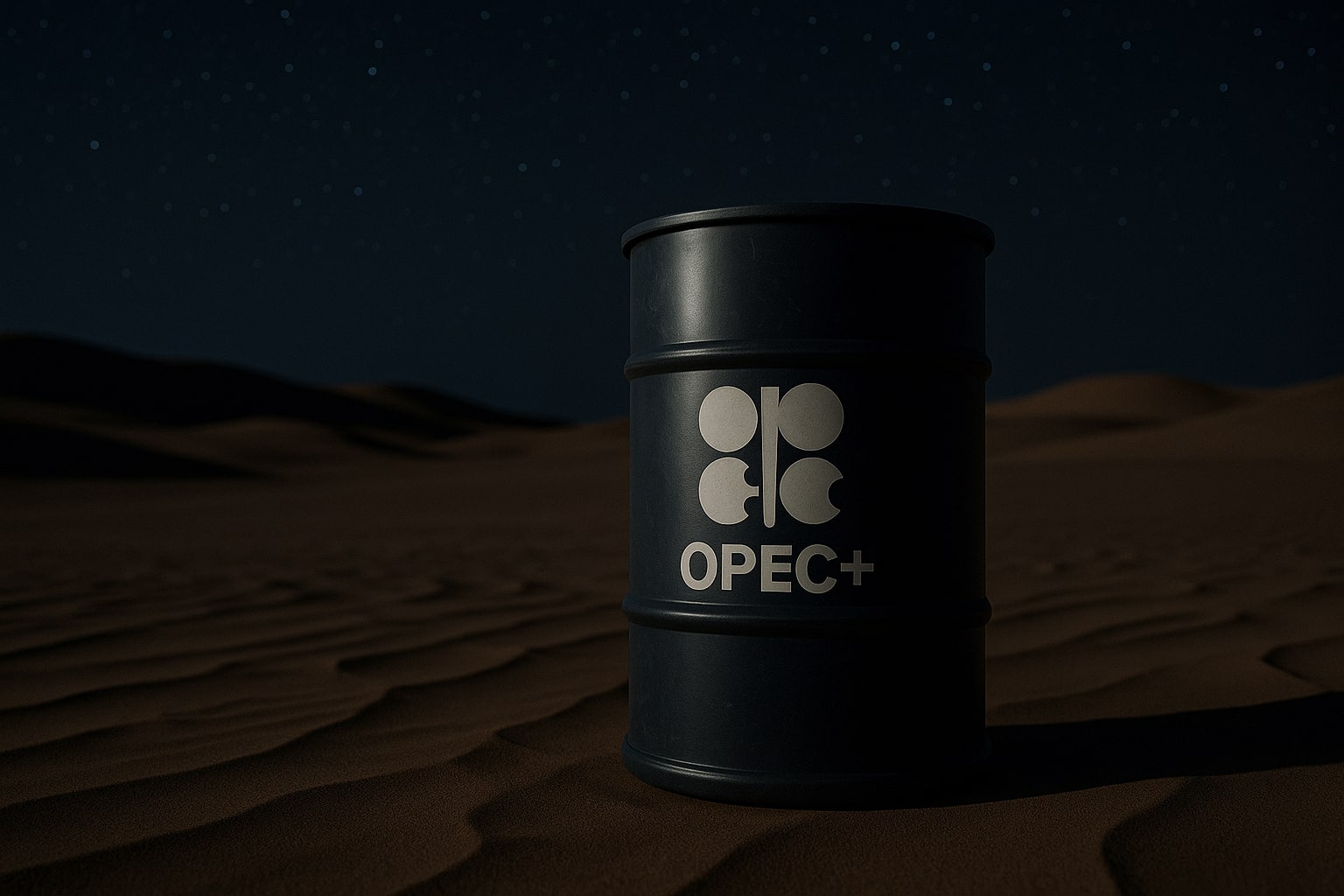
Oil Price Forecast: WTI at $63.61 and Brent at $67.57 Brace for Supply and Tariff Pressures
WTI and Brent swing as U.S. tariffs on India and Russian flows reshape crude balances while OPEC+ output and Fed policy add volatility | That's TradingNEWS
WTI and Brent Oil Price Forecast: CL=F at $63.61 and BZ=F at $67.57 Face Supply Glut and Tariff Tensions
Oil markets are entering September under heavy pressure, with WTI crude (CL=F) trading at $63.61, down 0.84%, and Brent crude (BZ=F) at $67.57, lower by 0.71%. The pullback reflects a sharp increase in global supply, strained demand signals, and political shocks from Washington to Moscow. Traders are now recalibrating their positions as oversupply collides with new geopolitical risks, creating a volatile price corridor between $63 and $69 that could set the stage for a decisive break in the coming weeks.
U.S. Supply Trends and EIA Drawdowns
The latest EIA report showed a draw of 2.4 million barrels in U.S. crude inventories for the week ending August 22, surpassing the consensus of 1.9 million barrels. Crucially, Cushing, Oklahoma—the delivery hub for U.S. crude futures—posted its first inventory decline in eight weeks. This was partly offset by weaker refinery runs across every region, pulling national throughput to its lowest level since July. That raises questions about whether current drawdowns can be sustained once U.S. summer travel ends with the Labor Day holiday. Gasoline futures at $2.131 per gallon, down 0.84%, confirm softer downstream demand.
India, Russia, and Trump’s 50% Tariff Shock
A major shift in the crude trade balance comes from Washington’s new 25% additional tariff on Indian goods, doubling duties to 50%. The White House is leveraging this as pressure against India’s continued imports of discounted Russian crude. India currently buys around 1.6 million barrels per day from Russia, making it Moscow’s largest energy customer. Despite the tariffs, refiners such as IndianOil and BPCL are set to raise September imports by 150,000–300,000 barrels per day, or 10–20% higher than August, taking advantage of deeper Russian discounts triggered by Ukrainian drone strikes that damaged Russian refineries. If New Delhi refuses to yield, Russian flows could remain stable, but if India reduces purchases, as much as 1.6 mb/d may vanish from the market, a loss that could drive Brent toward $75–$80 despite current oversupply fears.
Geopolitical Disruptions and Market Sensitivity
The Ukraine conflict continues to keep supply chains unstable. Drone strikes on Russian refineries have slashed domestic processing capacity, forcing Moscow to reroute crude exports and offer record discounts to India and China. Meanwhile, European infrastructure remains vulnerable, with Ukraine reporting fresh attacks on power and gas systems. At the same time, China is importing relabeled Iranian crude disguised as Malaysian barrels, with July 2024 flows reaching 1.53 mb/d, more than double Malaysia’s domestic production of 660,000 bpd. These irregular flows complicate supply estimates and add noise to official balances.
Technical Picture: Resistance at $65 and $69
On the charts, WTI crude (CL=F) is anchored around the $64–$65 range, with the 50-day EMA defending resistance. Any close above $65 could bring short-covering rallies back to $67, while a failure to hold $63 risks a breakdown to $61. Brent (BZ=F) has bounced from $67 support, with the $69 level acting as a ceiling. The flat 50-day EMA signals no clear trend, leaving traders to prefer range-bound strategies between $65–$69 until a catalyst forces a breakout.
Saudi Arabia and OPEC+ Dynamics
Saudi Arabia reported a 16% slump in oil export revenues in Q2, reflecting weaker prices even as volumes held steady. OPEC+ has already eased some production curbs, while non-OPEC players, including U.S. shale, continue to pump aggressively. Russian Arctic LNG output is also hitting records as ice conditions ease, adding to supply pressure. With the International Energy Agency forecasting record global supply into late 2025, the oversupply narrative is proving difficult to shake. Still, traders remain wary of supply shocks if sanctions or tariffs abruptly change trade flows.
Macro Backdrop and Demand Risks
Beyond oil fundamentals, global markets are fragile. Asian equities fell after Nvidia (NASDAQ:NVDA) earnings disappointed, weighing on risk appetite. At the same time, the U.S. Federal Reserve’s September 16–17 meeting looms large. NY Fed President John Williams hinted that rates could eventually be cut, but data dependency remains critical. A Fed cut would boost economic activity and oil demand, offering a bullish counterweight to oversupply fears.
Verdict: Buy, Sell, or Hold?
With WTI crude at $63.61 and Brent at $67.57, the balance of risks tilts bearish in the short term due to oversupply and seasonal demand slowdown. However, the structural risk of losing 1.6 mb/d of Russian barrels if U.S. tariffs pressure India too hard could quickly flip the script. Range-bound trading dominates for now, but any breakout above $69 in Brent could target $72–$75, while a breakdown below $63 in WTI exposes $60–$61. Given the supply glut but with geopolitical risks escalating, the call is Hold on both CL=F and BZ=F, with tactical buys only on dips near $61 WTI and $65 Brent, while upside targets hinge entirely on whether tariffs choke Russian flows or if demand remains resilient.
That's TradingNEWS
Read More
-
PFFA ETF Nears $21.50 as Rate Cuts and 9.49% Yield Spark Renewed Demand
29.11.2025 · TradingNEWS ArchiveStocks
-
XRPI and XRPR ETFs Ignite Ripple’s Institutional Rally as Inflows Near $1B and XRP Holds $2.20
29.11.2025 · TradingNEWS ArchiveCrypto
-
Natural Gas Price Forecast - NG=F Blasts to $4.85 as Demand Surge Fuel Multi-Month Breakout
29.11.2025 · TradingNEWS ArchiveCommodities
-
USD/JPY Price Forecast - Yen to Dollar Slides to 156.10 as Yen Strengthens on Fed Cut Expectations
29.11.2025 · TradingNEWS ArchiveForex



















